Minecraft and Lego blocks, pinecones and Super Mario stars. Maybe it's just us grown-ups making a false distinction between screen play and other kinds of play?
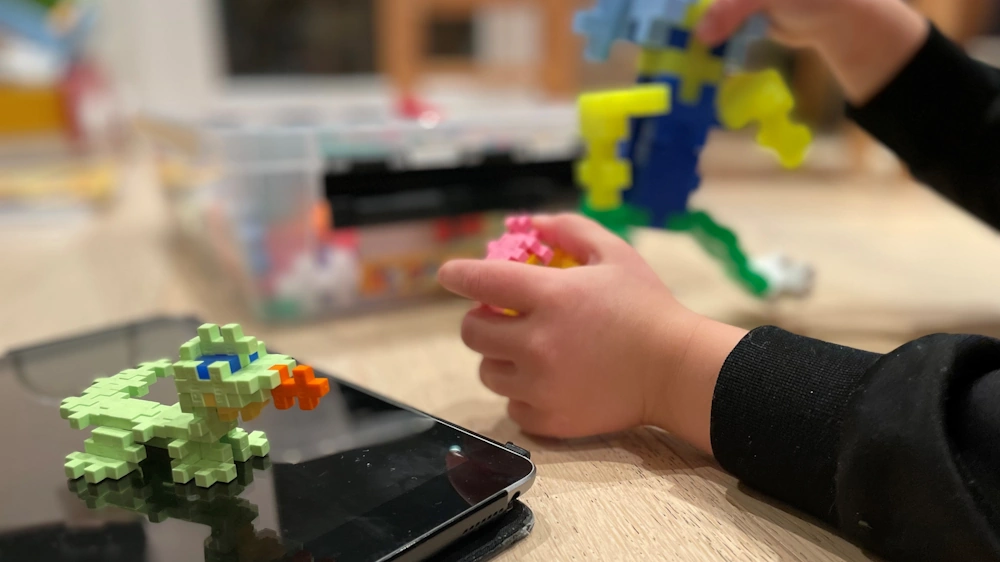
A dragon from the Minecraft video game may well be brought to life in physical Plus-Plus pieces on the floor in the home of a five-year-old. Photo illustration: Marit Eline Lervik Christensen/University of Oslo
"When people talk about 'screen time', the implication is that this is time distinct from the time when kids are not using a screen. But for young children, that's not always the case," says Kenneth Pettersen.
Originally a preschool teacher, more recently Pettersen has conducted research at the Department of Education, University of Oslo, where his PhD viva examination was held in December 2023.

In his PhD research project, Pettersen did a deep dive into the play of a group of three- to six-year-olds, concentrating on three boys who enjoyed playing video games. He observed these youngsters both in preschool and home settings for a total of 64 days over an 18-month period.
"I soon noticed that the digital worlds ordinarily associated with YouTube and the Minecraft video game manifested in what appeared to be all-analogue play. For example, the children were using concepts, game logic and characters from Minecraft gaming while building with physical construction toys at preschool," says Pettersen.
He explains that this was such a consistent feature of the children's play that it did not always make sense to distinguish between analogue and digital play.
"It was all like one game."
"Be as curious about screen play as any other play"
Over the last years, we have seen debates about children's so-called "screen time" in several countries. In 2019, the World Health Organization - for the first time in history - published guidelines addressing screen-time for children under the age of five.
In Norway, parents have spoken out against screen use in schools, and the Norwegian Government appointed a Screen Use Committee for schools and preschools in 2023.
Pettersen is calling for a more nuanced debate on screen time among children. He believes that if people really examine screen play, looking beyond the digital gadgetry, they may well arrive at a different view of screen time.
He adds:
"YouTube use might on the face of it seem very passive and sedentary ...
... but juxtapose it with other kinds of play, over several days, and you'll likely find that children are incorporating it creatively in other kinds of play, including where there is nothing digital involved."
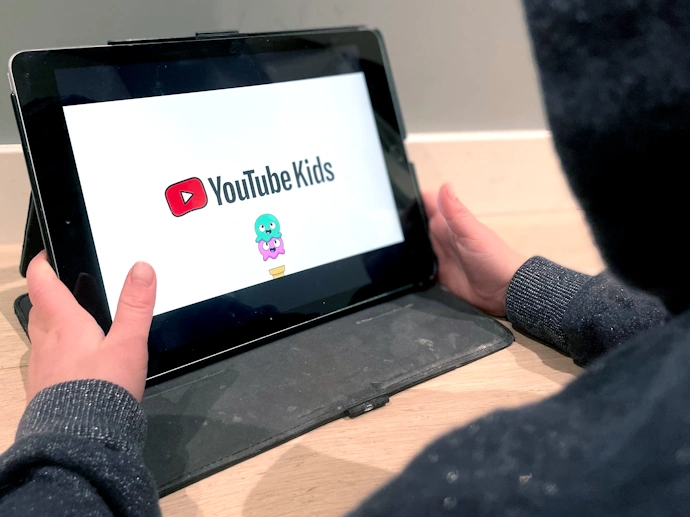
He does, however, point out that not all screen play influence is positive. In his research, Pettersen found situations where game logic constrained play and was destructive.
"Any playtime has upsides and downsides, and the same goes for this type of play. My point is that instead of being blinkered about screen time, we need to be sensitive and curious about play linked to on-screen experiences."
"This means that we could be looking at whether recurring patterns are positive or negative, and then supporting the good sides," is his advice.
Risky play needn't be on thin ice
The researcher observed that five-year-olds might jump up and down on a sofa, scream in ecstasy and hurl themselves backwards while watching YouTube. He was curious about what made them react like this.
What emotions are in play? And how do they affect relationships between children?
Previous studies on children's play have largely focused on what they talk about when they play, including how they use language to negotiate amongst themselves about the play they engage in.
Pettersen took a different approach:
"I wanted to explore what isn't so easily captured by language: children's affects and their excitement. To observe that, you have to study them more in-depth."
He discovered that the bond between children was strengthened when they 'played for high stakes' and took chances in video games.
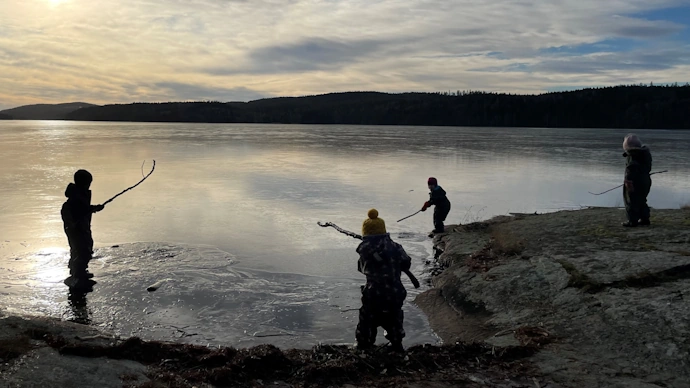
In other words, risky play is not limited to climbing trees or venturing out onto thin ice.
"The children were also observed making unsafe choices on purpose, for the thrill of it, and to achieve a strong peer-bonding experience during game play. They might, for example, strip the armour off a Minecraft character and have them wander around in the middle of the night.
By doing so, they were deliberately tempting fate.
They called this 'being a noob'," Pettersen explains.

This intense thrill-seeking recurred in their physical play: The children might be noobs (novices) in the woods, just as well as in front of a screen. The thrill of being a noob was the most important thing whether on-screen or off-screen.
Super Mario can also be 'the dead mouse'
Preschool staff tend to focus on letting the kids' spontaneous impulses shape the day's events. They refer to it as 'dead mouse pedagogy'.

This expression refers to an example of preschoolers who discover a dead mouse while en route to an outdoor destination. The children's questions and excitement about the mouse present a golden opportunity for stimulating learning and wonderment, at least if the adults are willing to take the time out from the timetable.
"Super Mario could also be the dead mouse if the adults are open to allowing that," Pettersen explains.
He encourages preschool educators to be just as enthusiastic when children show interest in things originally seen on a screen.
"Because these things can also stimulate exploration, learning and creativity, and can spill over into other types of play," he says.
For the five-year-olds in the study, pinecones in the woods, for example, were Super Mario stars and the Plus-Plus pieces on the floor at home were a live video-game dragon.
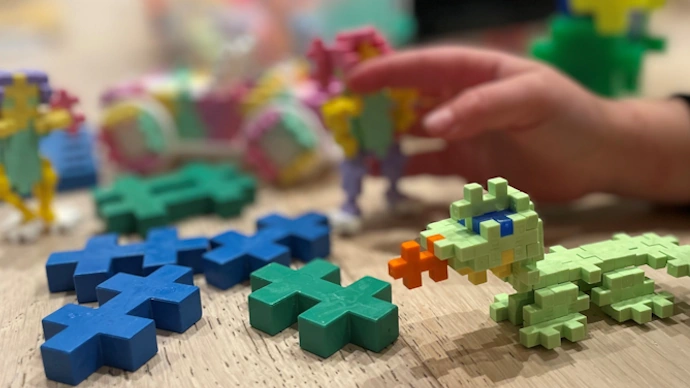
Might a gaming universe be a new Billy Goats Gruff?
Many preschool institutions in Norway have tended to create physical play zones themed on classic Norwegian children's fairytales like The Three Billy Goats Gruff or Thorbjørn Egner's Huckybucky Forest.
But maybe they have not done the same with more recent on-screen universes?
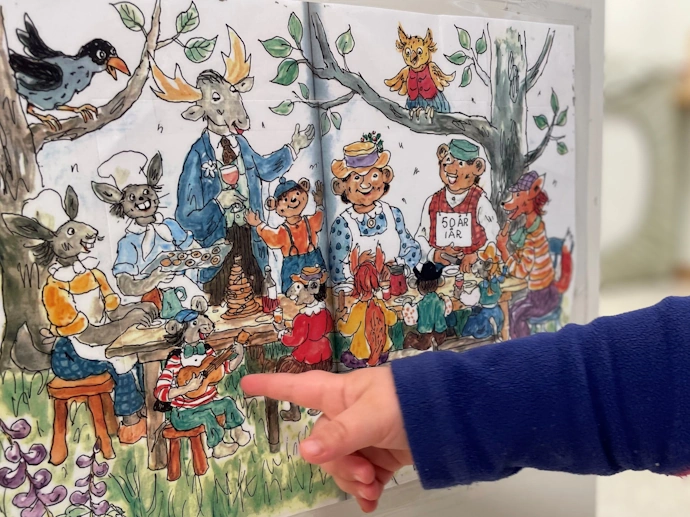
At the preschool, Pettersen observed that at one time the adults made physical play zones themed on the Super Mario universe for the youngsters to play in.
"Institutions open to doing this may be able to mirror the interests of more of the children, not just those who are brought to the theatre in their spare time," commented the preschool teacher and researcher.
Further reading
Pettersen, Kenneth (2024): More-than-human and more-than-digital collecting among young children in Norway.
Pettersen, Kenneth and Christian Ehret (2024): Refrains of Friendship in Young Children's Postdigital Play.
Pettersen, Kenneth; Silseth, Kenneth & Arnseth, Hans Christian (2022). Rethinking boundaries: Sociomaterial perspectives on digital technologies and early childhoods.
Pettersen, Kenneth; Arnseth, Hans Christian & Silseth, Kenneth (2022). Playing Minecraft: Young children's postdigital play.






